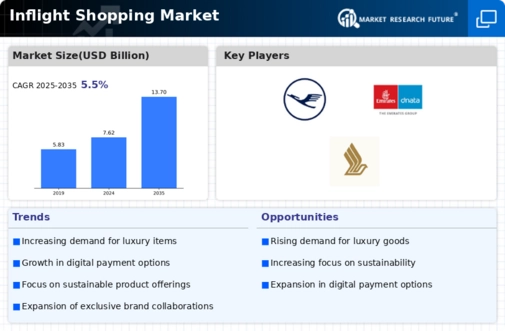Market Analysis
In-depth Analysis of Inflight Shopping Market Industry Landscape
The inflight shopping market embodies a dynamic landscape shaped by the convergence of travel, retail, and technology. This unique market is an extension of the broader travel retail sector, offering passengers the opportunity to shop for a diverse range of products while in-flight. The market dynamics are influenced by factors such as changing consumer preferences, advancements in onboard technology, and the collaborative efforts of airlines and retailers to enhance the inflight shopping experience.
Consumer preferences play a significant role in shaping the inflight shopping market dynamics. Passengers today seek more than just a means of transportation; they view air travel as an experiential journey. As a result, airlines are leveraging inflight shopping as a way to enhance the overall travel experience by providing passengers with the convenience of shopping for a variety of products while in the air. From luxury items to duty-free goods, inflight shopping caters to diverse consumer tastes, and airlines are keen to tailor their offerings to meet these evolving preferences.
Advancements in onboard technology contribute substantially to the market dynamics of inflight shopping. Inflight entertainment systems, Wi-Fi connectivity, and interactive touchscreen displays are being integrated into aircraft, transforming the traditional inflight experience. Airlines are leveraging these technologies to create immersive digital storefronts, allowing passengers to browse and purchase products seamlessly from their seats. This digitization of the inflight shopping experience not only enhances convenience for passengers but also opens up new revenue streams for airlines and retailers alike.
Collaborative efforts between airlines and retailers are pivotal in driving the inflight shopping market. Airlines often partner with duty-free operators and brands to curate exclusive product offerings and promotional deals for passengers. These collaborations go beyond traditional duty-free items, encompassing a wide array of products ranging from fashion and beauty to electronics and local specialties. Such partnerships create a win-win scenario, enhancing the shopping options available to passengers while providing airlines with additional revenue opportunities.
The regulatory landscape also plays a role in shaping the inflight shopping market, particularly concerning duty-free sales. Airlines need to navigate international regulations governing the sale of duty-free goods, ensuring compliance with customs and taxation requirements. Additionally, the introduction of new regulations or changes in tax policies can impact the types of products available for inflight shopping and influence purchasing behavior.
The competitive landscape within the inflight shopping market is characterized by collaborations between airlines, duty-free operators, and retail brands. Airlines are increasingly recognizing the potential of inflight shopping as a revenue-generating component of their business models. On the other hand, retailers see inflight shopping as an opportunity to reach a captive audience of affluent and diverse consumers. Successful players in the market are those that can create a curated and seamless shopping experience, taking advantage of both physical and digital channels to engage passengers.






Leave a Comment